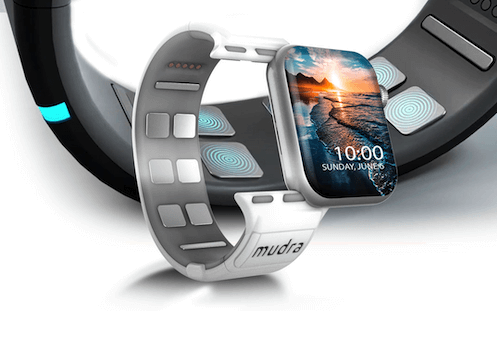The digital workplace is facing the most significant change ever
source: Volodymyr Kurbatov
The digital workplace is facing the biggest change ever. The chance that we will still be using a keyboard and mouse in 20 years is minimal. Did you know that the keyboard for the computer is over 50 years old? Around 1980 the mouse was added as the standard instrument for input and editing. We can no longer live without it.
Or is it?
I think we are at a tipping point where we say goodbye to the keyboard and mouse.
For example, CES 2021 presented the Mudra Band. A strap for the Apple Watch that converts the electrical impulses from your hand to your brain into actions such as recording your phone or playing music via a hand gesture. Fun fact: a Mudra is a symbolic or ritual gesture or posture from Hinduism, but you also see it in yoga. (but that aside)

In VR, you can already see the change that virtual hands are replacing the joysticks that come standard with a headset. These virtual hands are a literal reflection of your own hands. You can do actions in the VR world with simple movements. Naturally, these hand movements are supplemented by gloves that contain haptic technology. With that, you simulate feeling.

A third example is speech. Examples like Apple’s Siri or the Google Assistant replace all input via a keyboard. You can also dictate with Word, replacing the need for the keyboard.
What are the benefits of this?
A keyboard and mouse are limiting. In the creative industry, artists use drawing tablets that are much more detailed than drawing with a mouse. Our digital world is also becoming increasingly three-dimensional. Instead of a two-dimensional movement, depth is added and even speed. So, even the fourth dimension.
Besides, a mouse and keyboard require a perfectly working set of motor skills and two well-functioning arms. Unfortunately, this is not given to everyone. As a result, a group of people can participate perfectly, but who don’t have that are left out. Because specific adjustments are needed.
According to Matt Fleckenstein Senior Director, Mixed Reality at Microsoft, the ROI for first-line workers when adopting mixed reality in the enterprise has been significant:
source: 2021 Immersive Technology Trends Report
“We’ve seen 90% of touch labor eliminated, errors reduced to zero, and increased employee satisfaction.”
Over the past 18 months, we have seen the rapid adoption of mixed reality in the enterprise. The primary use cases have centred on helping first-line workers in manufacturing, architecture/engineering/construction, healthcare, and retail to learn skills more quickly, complete tasks faster and commit fewer errors.
With a labour market under pressure, alternative means of input allow for the use of this hidden workforce. Especially now that employers have experienced remote work as an effective way of working.
Examples
In VR you have an avatar. The method of input is irrelevant. As long as the software can translate the input into something that can be used to visualize the input, it is fine.
With the help of haptic technology, in addition to visualization, a feeling is also created. Haptic gloves can give the feeling of the resistance of, for example, a virtual keyboard.
With tools such as the Mudra Band, you can convert movements into actions. You only need one hand. This kind of sensory input can help you get the job done.
2040 keyboard free?
Of course, we are at the beginning of this development, and applications are also not yet mature enough.
However, employers have experienced that remote work works and that talent is scarce means that anyone should contribute to the workforce.
Regardless of where they live or if they have a physical disability.








